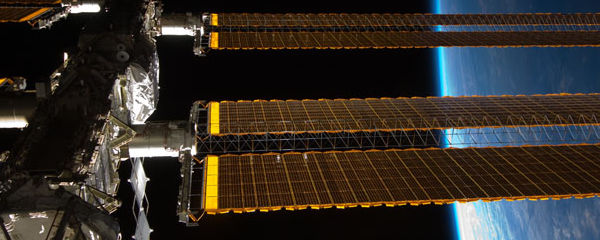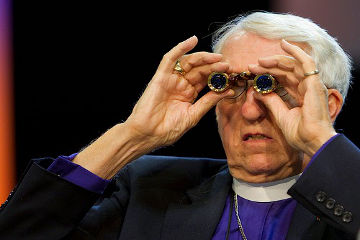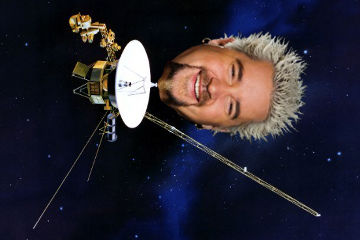What I’ve Learned:
“Heliosphere: It’s the sun’s Twinkie. We’re just along for the ride.”
There are many complicated models of what our solar system looks like. Then there’s my model: the solar system is like a giant Twinkie, with a Red Hot candy jammed in one end.
Seriously, NASA. Why make things hard, when they could be so delicious?
So here’s how the Twinkie squishes:
The Red Hot, naturally, is the sun, radiating loose particles and waves of heat in all directions. With the candy, most of the particles are artificial cinnamon flavor and FD&C red #5, and they only make it as far as the nearest taste bud.
With the sun, the particles are solar wind — a plasmafied soup of protons and electrons — and they shoot outward at roughly 1.2 million miles per hour, give or take a speeding bullet or two.
The sun is therefore much more powerful than a Red Hot candy, but considerably less appetizing. And, so far as we know, non-fat. If you’re into that sort of thing.
Back to the model. The Twinkie represents the full spread of solar material, a region called the heliosphere. This bubble of sun-spewed plasma extends roughly 120 astronomical units — or A.U., the distance from the earth to the sun. That’s a very long way. Even wasabi pea particles don’t make it out that far.
The heliosphere doesn’t extend equally in all directions, though; hence the “Twinkie-shapedness” of the model. Remember that our sun is also constantly whirling around the galaxy at breakneck speed, which stretches the plasma bubble out behind it. Imagine the Twinkie as a speeding race car, with the Red Hot near the nose.
Or a Twinkie jet plane, if you like. Any method of theoretical Twinkie locomotion you prefer is fine. This is one of the main perks of stellar science, from what I understand.
The final bit of the heliosphere model is the outer part, where the delectable Twinkie cream turns into scrumptious Twinkie cake. In space, this interface is called the termination shock, and it’s where those plasma blasts from the sun finally slow down below the speed of sound. This happens when the solar wind interacts with the interstellar medium, a haze of gas and dust and cosmic rays flowing between the stars.
As the interstellar medium slows down the solar rays, the plasma stagnates and bubbles and clumps up — much like the spongecake cradling our Twinkie. This layer is called the heliosheath, and is immediately followed by the heliopause, where the solar wind finally disappears entirely. It’s the thin brown crust that marks the final boundary between Twinkie and not-Twinkie. When you pass the heliopause, you’re no longer in the solar system.
So how many man-made objects have made this journey out of the heliosphere, to boldly go where no Twinkie has gone before? One — or possibly none. Voyager 1, launched in 1977 to explore the outer planets, has been hurtling directly away from the sun at eleven miles per second since 1980. It’s believed that in August of 2012, Voyager 1 passed through the heliopause and out of the sun’s fiery clutches.
But because we don’t precisely know what the end of the solar system looks like, researchers are still proposing and conducting tests to determine exactly how “out” Voyager 1 is. If not yet, then it’s expected to pop through the heliopause within the next year or so, followed soon by Voyager 2.
(And if my petition to NASA goes through, next by Guy Fieri.)
Breaking an object out of the heliosphere will be quite an accomplishment, once confirmed. But why anyone would run away from a cinnamon-flavored Twinkie is beyond me.




